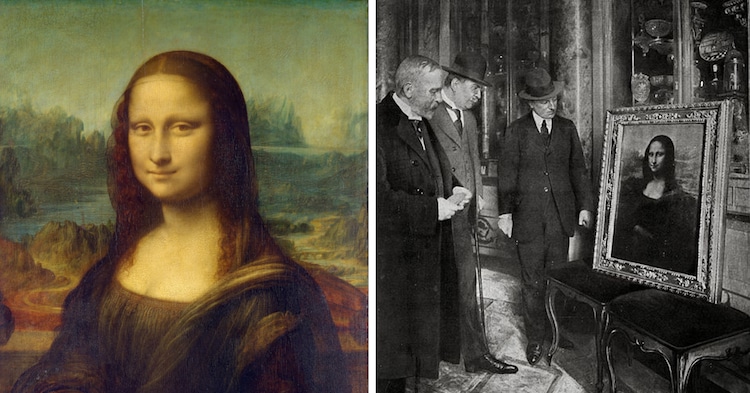
The concept of cultural diffusion is based on the theories of Leo Frobenius. In his 1897 book Der westafrikanische Kulturkreis he described this phenomenon. Today, cultural diffusion is considered to be a major factor in globalization. There are two types of diffusion: intercultural and contagious. Both types of diffusion spread knowledge in a similar manner. Therefore, both types are essential to globalization. They are however not the only type of diffusion.
Inter-cultural diffusion
Inter-cultural dissemination is the spreading of ideas or concepts between cultures. Once the idea or the concept is introduced to a new culture the adopters give it new life. For instance, the Mayans invented the concept zero. This idea was later incorporated into a larger system for mathematics. Similar to chess, it originated in India but was later spread to Persia then to Europe.

Hierarchical diffusion
The process of hierarchical diffusion involves a flow of ideas from one source to another. The sources of hierarchical diffusion include business, government, and the military. Fads can be a simple example. These are trends that originate in a certain community and then spread out to the wider population. For example, hip-hop music arose in urban areas and quickly spread throughout the world. Slang expressions also have a history of hierarchical diffusion. They originated within one age group, and later reached a large audience.
Contagious diffusion
One common definition for cultural diffusion is the "spreading ideas by contact or far." It is the transmission of an idea from one person to another. The idea is quickly spread by people who interact with it. Because it spreads quickly from one source, it is often compared with a forest fire. There are three types: expansion, contagious, and reinvention. The second type is more dangerous because it spreads faster and is more difficult to contain.
Stimulus diffusion
Cultural diffusion occurs when a new idea, or concept, is exposed to another culture and its adopters give it new life. The Mayans developed the idea of zero first, then it was spread to India. It was then integrated into a larger system of mathematics. The original game of "chess" was played in a different culture. It was then spread to Europe.
Relocation diffusion
Cultures evolve through migration and re-location of people. People who move to other areas bring new ideas and traditions with them. This allows their culture to be integrated into new societies and influence the culture of the new locale. This process is called expansion diffusion. This is due to mass immigration. For example, the Southern United States has a culture that is influenced by African, Caribbean, or other cultures.

Expansion diffusion
Expansion diffusion is the spreading of ideas or concepts within a population. The number of people affected is constant and grows as time goes by. There are three types expansion diffusion. Contagious diffusion is the fastest way for ideas and concepts to spread rapidly from one person or group to another. Viral videos can show you this type of diffusion. Before you begin to implement each type of expansion diffusion, it is crucial to fully understand their workings.
FAQ
How can pop culture be avoided?
First, we should recognize when pop culture is influencing us. Then, we need to ensure that we are not being influenced. Here are ways to help you stay away from bad influences:
-
Avoid watching Game Of Thrones and other violent shows.
-
Don't spend time surfing the Internet. Read books instead.
-
You should watch less TV. Spend your free time doing healthy activities.
-
Make sure you are careful what you post online. Once comments are posted, you cannot delete them.
-
Make sure that any websites you visit are safe. Before you provide personal information, be sure to check them.
-
Don't allow anyone to pressure you into dangerous actions.
Talk to an adult if you feel like you are becoming dependent on pop culture. You can either call your local library (800-THELOOST), or the National Center For Missing & Evacuated Children (1-808-THELOOST).
How can I make pop culture part of my marketing strategy
You need to examine the trends in pop culture to learn how you can use it in your marketing strategy.
Let's say, for instance, you wanted to promote a movie. What kind of promotion would you be able to run?
You could create a trailer with clips taken from the film. You can even find clips that feature your products and services to include in your trailer.
Or perhaps you could create a parody version of the trailer using other famous films.
If your product or service is closely related to the movie's themes, you can create a campaign that follows the film's storyline. For instance, if the movie is set in outer space, you might want to advertise a product that helps astronauts stay healthy while traveling through space.
You could do promotions based upon the plotline of a business related to the movie's subject. If your company sells food products, you might offer customers free samples if they buy tickets to the movie.
What can pop-culture teach us?
Our society today places more importance on material goods than all other things. This is especially true of young people. They spend hours every day looking at screens. They spend hours looking at screens, playing video games, and surfing the internet. All of these distract them from the task at hand, which is to complete school work. As a result, they end up failing classes.
The world we live in is one where everyone wants the same thing. That means being popular. Popularity depends on money, clothes, and other possessions. This causes some people to do things they don't like.
We have become dependent on technology. The internet has made it possible to access all sorts of information. Not all information is correct. False rumors can be found all over the Internet. These rumors are quickly spread by people sharing them on social media. It's easy for people to post things without checking if they are true.
People have lost their ability to think critically. They believe everything they read on the Internet. They believe everything they read in magazines and on television. They stop thinking about themselves. Instead, they follow the crowd.
When we rely on others to tell us what's happening, we lose control over our lives. Pop culture teaches us that we can depend on others. It also makes us lazy. While the truth is often out there, we don't always know it.
What are examples of pop culture today?
Pop Culture refers to the art form of 21st century. Pop Culture includes all forms of popular entertainment such as music, film, TV and video games, fashion, advertising and comics. In his 1985 book, Amusing Ourselves Too Death (1985), Neil Postman first coined this term. He defined "pop" as a style of mass communication that uses cheap tricks and formulaic devices to create an illusion of spontaneity and uniqueness.
He said that people don't experience true joy because they are conditioned to look for media experiences that make them feel better than others. He claimed that young adults have lost their ability to think critically due to this type of cultural expression.
Pop culture is sometimes also called popular culture, consumerism, or pop culture.
Who is the inventor of Pop Music?
Frank Zappa created it. He coined the term "pop music" to describe his musical style.
He said that his goal was to make music that is accessible to everyone. Pop music was what he called his music.
Zappa also coined the phrase "You know it’s POP when ..."" which refers to something being popular if it is enjoyed by many people. Michael Jackson's Thriller album, for example, is one of his most popular albums.
Zappa has a different definition of pop music than we do today. Pop music encompasses all types of music. However, back then only certain music was considered popular.
What is popular culture in the world of music?
Popular Music Culture takes many forms.
Popular music culture is defined by its use of certain styles of music (e.g., rock, jazz) and lyrics. It also includes the impact of visual media such as television, fashion and advertising on artists' careers, as well as public perception.
It's also the way that fans interact with their favorite musicians.
Popular music culture has one element: the rise of "superstars", artists who have gained fame and fortune.
These celebrities often transcend genres to become cultural icons. The evolution of popular culture has been influenced by their popularity.
Other elements of popular music culture include:
* The rise of recording technology -- from acoustic instruments and electric guitars to microphones and microphones.
* The invention of record players and radios;
* The birth of rock'n roll.
* Introduction of film and TV;
* The birth MTV and VH1
* The creation or the Internet.
What examples of pop culture are there in 2021?
The world was changed forever on 11th September 2001, when two planes were hijacked by terrorists and crashed into the twin towers of the World Trade Center in New York City. 9/11 was the day that would change history.
The popular culture was impacted by these events and continues to be today. We can see the many ways that this event has influenced us.
Television shows like 24 and movies like United 93 are included. They tell the story of the events that took place on the flight from Boston, Massachusetts to Los Angeles on September 11, 2001. Dexter Filkins' book The Forever War is also included.
Everyone can remember exactly where they were when the attacks occurred. Some people jumped out of their beds and went outside. Others read newspapers or watched TV.
Pop culture is always changing. It is both a reflection of society, and it can also be a source for inspiration. What is the impact of popular culture on society in 2019? We don't yet know. It will be completely different than the one before.
Statistics
- For example, the term hater meaning someone who strongly undermines or criticizes others, often due to pathetic jealousy, likely emerged from hip hop culture, such as the term playa hateras, used by influential rapper Biggie Smalls as early as 1995. (simplicable.com)
- According to Kathryn Sorrells (2013, pp. 142-144), there are several ways that we can become informed consumers of popular culture. (socialsci.libretexts.org)
- According to CNBC.com, “more than 70% of the film's revenue came from countries outside the US” (https://www.cnbc.com/2019/01/08/aqua...nal-sales.html, ret. 8/18/19). (socialsci.libretexts.org)
- According to Dictionary.com, popular culture, or low culture as it is sometimes referred to is comprised of the “cultural activities or commercial products reflecting, suited to, or aimed at the tastes of the general masses of people” (7/21/19). (socialsci.libretexts.org)
- Recently, the market share across Western Europe has ranged from 60-75% (Hopewell, 2013). (socialsci.libretexts.org)
External Links
How To
Which companies used pop culture in marketing strategies?
Many companies have used popular cultures in marketing strategies over recent years. Here's a selection:
-
McDonald's - The McDonald's Superbowl campaign 2014 saw clips from movies like 'The Big Short', 'Inside Out'. They also ran an ad called "I lovin' It", in which they featured images showing people eating food and dancing to Drake songs.
-
Nike – In 2013, Nike launched a commercial featuring Kevin Durant (basketball player). He claims that he was inspired in part by the movie Space Jam when he decided to wear his Michael Jordan shoes and play basketball.
-
Coca-Cola - During the summer of 2015, Coca-Cola released a series of ads called "America's Choice Awards." These were based in categories such as Best Movie, Best TV Series, and so on. Each category was advertised for 30 seconds at a fictional awards ceremony.
-
Google - Google declared in November 2015 that the company would sponsor the Super Bowl. This was the first sponsorship since 2010. This included launching a website called google.com/superbowl, allowing users to watch highlights from previous games. Google would allow users to vote for their favorite team and display the results along with the current scores.